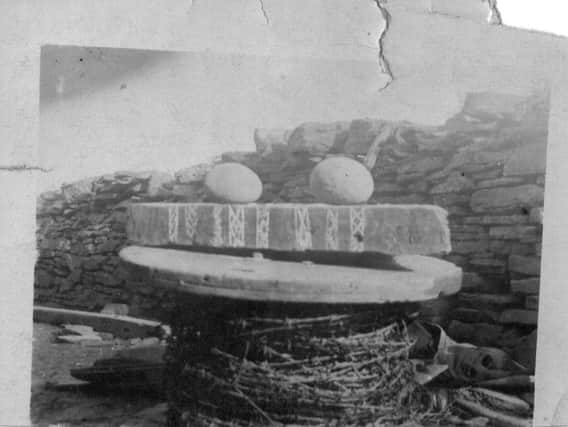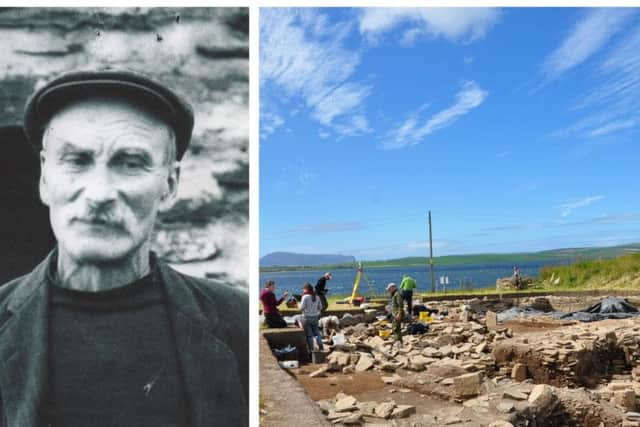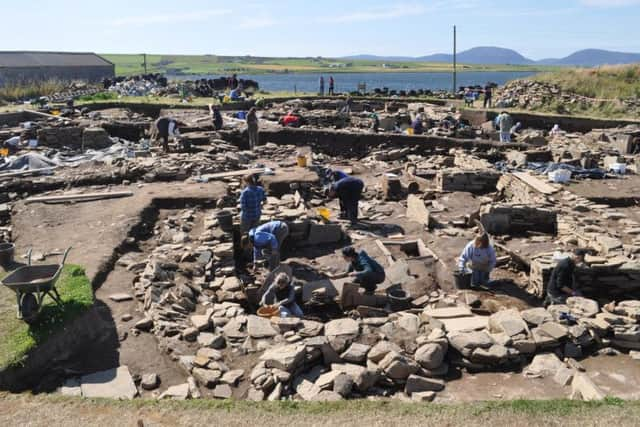The Orkney farmer who explored the Ness of Brodgar - 80 years before anyone else


This prehistoric treasure trove of epic proportions is where feasting, trading and the celebration of important political and celestial events took place with the scale and quality of the site and its relics continuing to astonish archaeologists today.
Around 800 examples of artwork have been found within this complex of buildings, which sits between the magical Ring of Brodgar and the Stones of Stenness, with over 90,000 pieces of pottery found along with large assemblages of bones and stone tools.
Advertisement
Hide AdAdvertisement
Hide AdThe existence of the site fully emerged in 2002 when a geophysical survey revealed a cluster of underground anomalies. The next year, a large notched stone was unearthed.


But what is lesser known is that Orkney farmer Peter Leith, of Appiehouse, first recognised the importance of Ness of Brodgar when he visited, with his spade, nearly 80 years earlier in 1925.
He went to investigate after his neighbour, John Wishart of Brodgar Farm, turned up some large unusually marked stones while out ploughing.
Mr Leith, who was born into farming but immersed himself in archeology, history, astronomy and economics recognised the potential importance of the stones straight away. A keen photographer, he took the first picture of what is now known as the Brodgar Stone, with the markings highlighted with chalk, with the images used to illustrate a paper on the discovery for the Society of Antiquaries of Scotland. Patricia Long, the granddaughter of Mr Leith, said she was “intrigued by her grandfather”, who was also a friend of Orcadian poet George Mackay Brown.


“My grandfather was more into archaeology than agriculture,” said Ms Long, a tourist guide on Orkney.
“He got a mention in George Mackay Brown’s book An Orkney Tapestry. He wrote that two of Orkney’s greatest exports were eggs and professors. He also mentioned Orkney’s self-taught scholars - and he wrote about my grandfather.”
Mr Leith could always be seen cycling home from Stromness library every Wednesday with a bag of books over his shoulder and that a ladder was required to reach his “book-stacked loft”, Mackay Brown wrote.
“No man knew more about the curious by-ways of Orkney history and Orkney character than the gentle silken-voiced farmer,” he added.
Advertisement
Hide AdAdvertisement
Hide AdMr Leith left school at 13 to run the family farm, which had been held by his ancestors since 1546.
Ms Long said:“He left school but wrote all sorts of articles for the local paper on subjects such as astronomy and economic theory. We also have his little collection of Neolithic bits and pieces such as some very nice stone axes and spindle whorls. He was well known for his interest in archaeology but he had to spend most of his time being a farmer.”
Ms Long said it is now known that her grandfather was digging in the corner of Structure 8 at Ness of Brodgar back in 1925.
She added: “Picture him and his unnamed friend on a February day, digging a deep hole in a ploughed field, entirely unaware of what lay all around them. They were inside a 5,000 year-old building that was going to astonish archaeologists in the 21st Century.”
The site continues to attract huge attention across the globe with circa 20,000 visiting the site each year over the eight week digging season, which is led by Nick Card of Orkney Research Centre for Archaeology (ORCA).
Their efforts may come decades after that early work by Peter Leith, but they are bound by a deep regard for the island’s ancient past.
For more of Ms Long's work and research, visit www.aboutorkney.com
